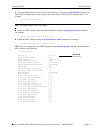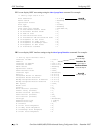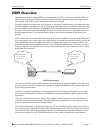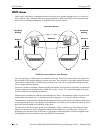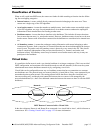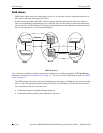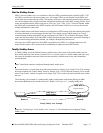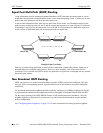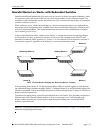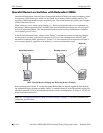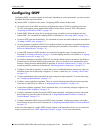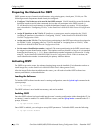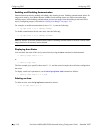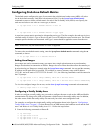
OSPF Overview Configuring OSPF
page 1-12 OmniSwitch 6800/6850/9000 Advanced Routing Configuration Guide December 2007
Equal Cost Multi-Path (ECMP) Routing
Using information from its continuously updated databases, OSPF calculates the shortest path to a given
destination. Shortest path is determined from metric values at each hop along a path. At times, two or more
paths to the same destination will have the same metric cost.
In the network illustration below, there are two paths from Source router A to Destination router B. One
path traverses two hops at routers X and Y and the second path traverses two hops at M and N. If the total
cost through X and Y to B is the same as the cost via M and N to B, then these two paths have equal cost.
In this version of OSPF both paths will be stored and used to transmit data.
Multiple Equal Cost Paths
Delivery of packets along equal paths is based on flows rather than a round-robin scheme. Equal cost is
determined based on standard routing metrics. However, other variables, such as line speed, are not
considered. So it is possible for OSPF to decide two paths have an equal cost even though one may contain
faster links than another.
Non Broadcast OSPF Routing
OSPF can operate in two modes on non-broadcast networks: NBMA and point-to-multipoint. The inter-
face type for the corresponding network segment should be set to non-broadcast or point-to-multipoint,
respectively.
For non-broadcast networks neighbors should be statically configured. For NBMA neighbors the eligibil-
ity option must be enabled for the neighboring router to participate in Designated Router (DR) election.
For the correct working of an OSPF NBMA network, a fully meshed network is mandatory. Also, the
neighbor eligibility configuration for a router on every other router should match the routers interface
priority configuration.
See “Configuring Static Neighbors” on page 1-31 for more information and setting up static neighbors.
Source (A) Destination (B)
XY
MN
A-> X-> Y-> B = A-> M-> N-> B




